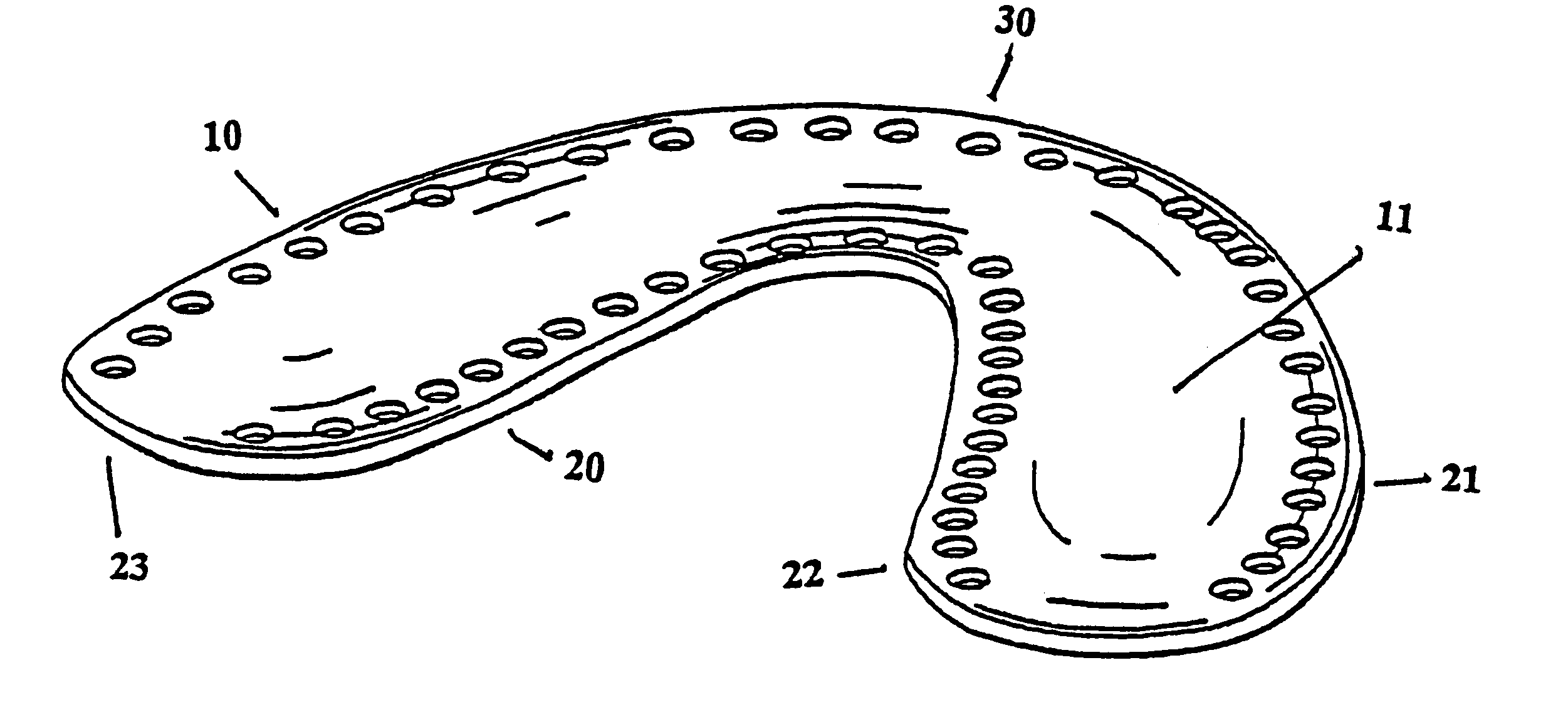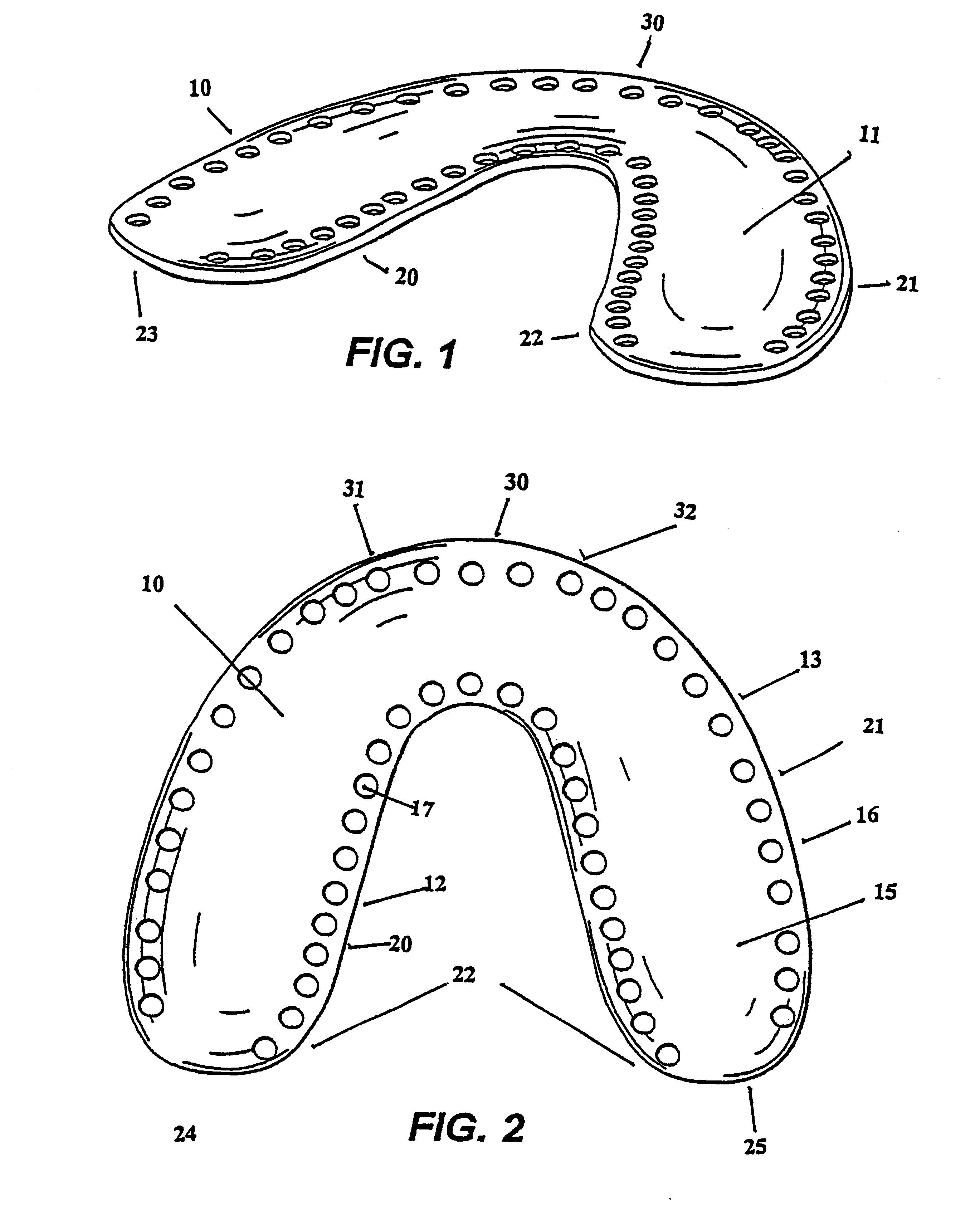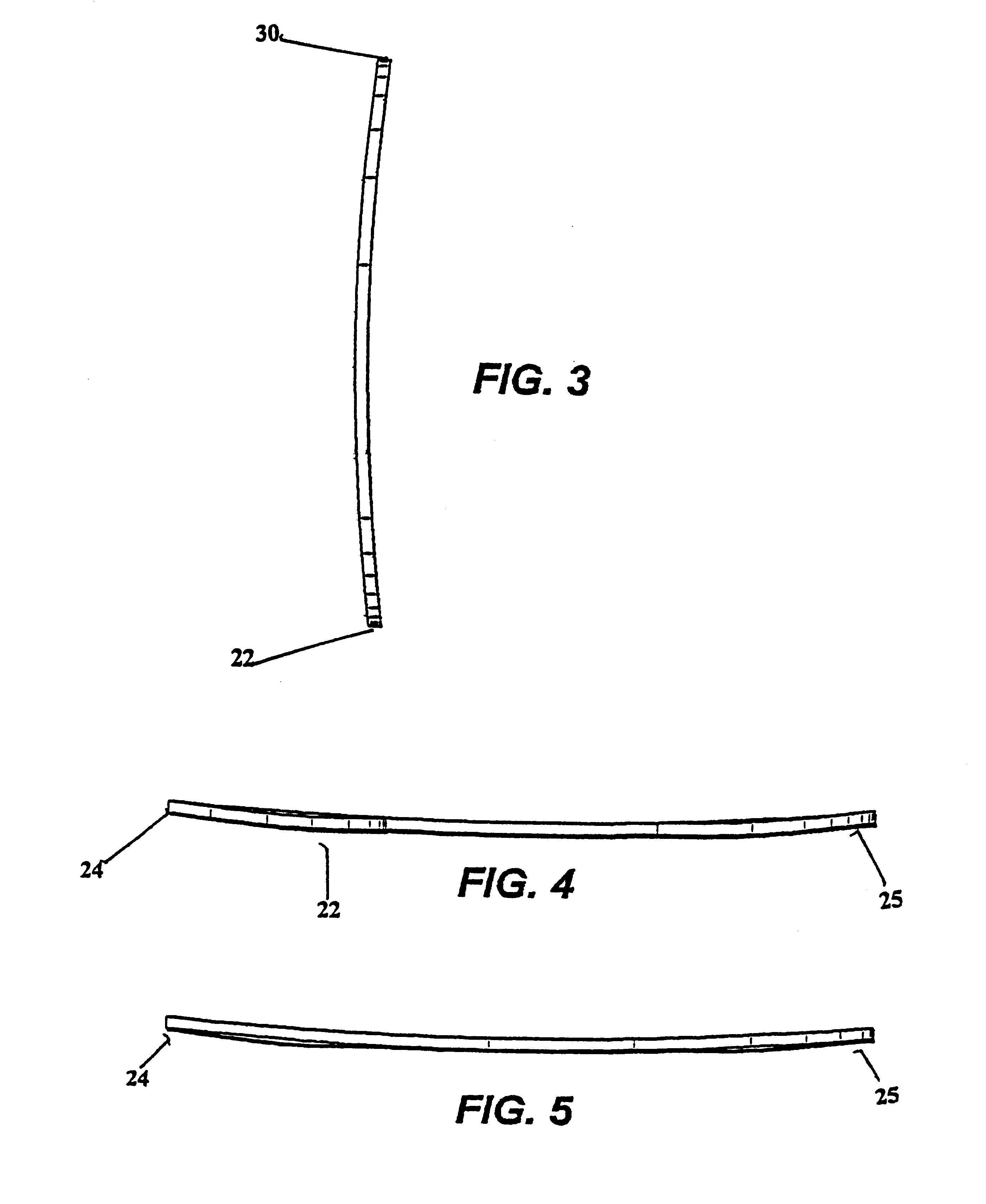Mandibular fractures have historically been one of the most difficult procedures for the reconstructive surgeon.
The slightest damage to this complex structure causes disruption of the relationship between 32 teeth and 2 joints.
The most minute operative error during mandibular repair will result in flagrant post-operative morbidities including
headaches, TMJ arthralgias, chronic ear and jaw pain, sleepless nights, and
anorexia.
However, when the patient does not have ideal
dentition due to oral trauma, has prior dental extractions, or an edentulous arch, the surgeon must attempt to estimate the mandibular reduction using direct
visualization and TMJ positioning alone.
There exists no device in the prior art to aid the surgeon in reapproximation of the mandible.
Incorrect alignment can lead to morbidity and malocclusion.
Since the surgeon is relying on the patient's teeth as a template, those who are edentulous, or have damaged or missing teeth (which is commonly the case due to the inciting traumatic event) are unlikely to be aligned properly.
Furthermore, there are serious problems with long-term fixation of the mandible to the maxilla such as discomfort of the patient, problems clearing oral and respiratory secretions which can lead to
airway blockage, increased incidence of dental carries,
weight loss,
malnutrition, and
increased risk of gingival infections and osteomyolitis of the mandible and maxilla.
The most significant of the aforementioned complications is
airway compromise.
Other deaths have been reported due to postoperative oropharyngeal swelling because of the patients' inability to open their mouths to breath adequately.
These splints, however, are not useable for mandibular fractures, but only for other dental problems such as
temporomandibular joint (TMJ) disorder.
In addition, these splints require taking impressions of the teeth and thus are not quickly available, and are expensive due to the
custom fitting that must be performed.
Such splints must also rely on interdigitation of the teeth which is not of use in the
edentulous patient.
There are several significant disadvantages with this indirect fabrication technique.
One serious drawback is that indirect fabrication usually requires at least several days to complete because the dentist must send the impression and registration to an outside laboratory.
Unfortunately, patients with an injury are often in serious pain and need a splint immediately, particularly after a traumatic
joint injury.
Any period of
delay in placing the finished splint in the patient's mouth can cause unbearable pain during the period of
delay.
A further
disadvantage with indirect fabrication methods is that they increase the cost of the dental splint.
Making impressions and sending them to a laboratory for conversion into a splint is costly.
The expense associated with these multiple steps sometimes makes the splint more expensive than a patient can afford or an insurer is willing to pay.
Another
disadvantage with indirect fabrication is that it is inaccurate because the existing
anatomy has been fractured and the mold is therefore of a configuration which is not correct.
Unfortunately, a therapeutic bite constructed indirectly in the laboratory seldom fits perfectly in the patient's mouth.
Such adjustments further increase the manufacturing expense and often result in a bite surface which is still not entirely accurate.
The most dominant
disadvantage is that during twist tightening of the wires, the wires can easily snap and the whole process must be repeated hence adding to the length of the installation procedure.
 Login to View More
Login to View More  Login to View More
Login to View More 


